Developing and Designing the NT1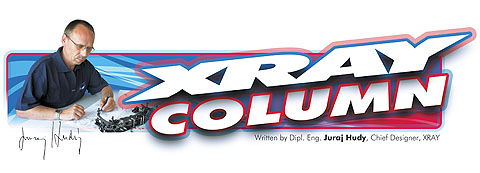
Any time I finish a new car design, I always have the feeling that it was the most demanding and difficult project I have ever faced, but then again starting a new project I realize that I was wrong. This was exactly the same way I felt about the NT1 project. After finishing the development stage and starting the production of the XB8 back in 2004, we started again on the project that I was always very eager and excited to start working on — project code name NT1, XRAY’s first 1/10 scale nitro touring car. Normally one would ask or wonder, “More than 3 years spent on a project?” Well, it may surprise you to know that in reality, we have developed and designed TWO cars to the final stage, but only one will see daylight. “What’s that?” you say? Keep reading… 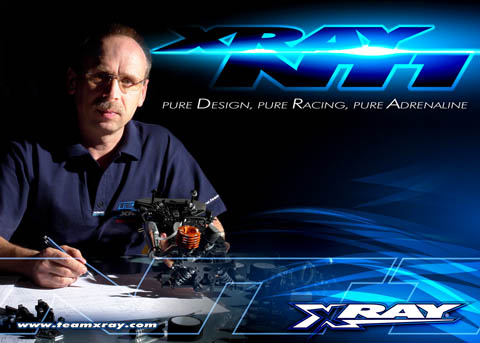
The initial idea with the NT1 concept was very clear – to develop and design a completely new and innovative nitro touring car. When we started to work on the first concept it was significantly different and unique from anything on the market. After one year of development and finalizing two different running prototypes, which were tested, I realized that our unique approach certainly had a lot of potential but at the same time I started to be realize that such a radical different design would be risky; it was absolutely necessary to test the car under all different racing conditions around the world. We simply could not risk releasing a car that may not work as well as needed in some conditions. 
After very hard deliberations — and an awareness that the NT1 was aimed at customers of a high competition level — I reached a very difficult decision but one that I had to make: to stop the development of the project. We decided to start again from the very beginning, but this time we went with a more time-proven platform concept… a conventional nitro touring car design. In 2005 with a new spirit we started working on the second platform of the NT1 
After we all cleared our minds, we started from scratch with a very clear strategy – to design a well-proven nitro touring car platform but with the typical XRAY approach, which means we would concentrate on the smallest details to make the platform perfect. We had 3 main priorities: --- 1. Delivery a high-competition nitro touring car with very good racing characteristics for all different racing conditions, a car that is very fast but still very easy to drive hard. --- 2. Design all parts in such a way that they will be as strong as possible, easy to set-up and perform maintenance. --- 3. Have a very easy, clean, and pure racing design – in other words, a typical XRAY approach. 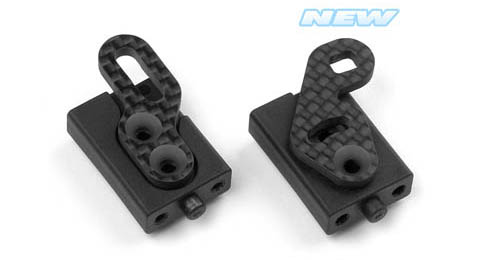
Starting with a clean sheet on the design board, we had very clear areas that we had to focus on: • Super-low CG The handling of the car depends on overall weight distribution and front/rear & left/right balance. By having the lowest possible CG, the car will be super stable and easy to drive. As such, all the parts were positioned as low as possible, and we designed the world’s smallest differentials, which allowed all other parts to be positioned even lower than a traditional car. With the industry standard receiver battery pack under the fuel tank, and an optional smaller receiver pack we still had the option to lower the fuel tank by another 3mm, thus creating the lowest platform. Being so low, we had a real challenge on our hands to put all parts close together without infringing on each other... fractions of millimeters really count on this car. 
• High-efficiency drivetrain Having a super-efficient drivetrain is very important for maximum performance. To accomplish this important goal we spent a lot of time on virtual testing and simulations of all the different ratios, pulley sizes, and belt-wrapping angles to ensure maximum efficiency of all drivetrain parts. Using exclusive HUDY Spring Steel™ for all drivetrain parts, we achieved very low rotating masses along with optimized drive ratios we ultimately reached our goal of a super-efficient overall drivetrain. To ensure that efficiency is not wasted, all rotating parts work absolutely smoothly. We have experienced the negative effects of standard ball-bearings installed in hard composite steering blocks, uprights and bulkheads — where forces are transferred to the bearings which cause them to not work freely and smoothly — and we were adamant not to have this happen on the NT1. Because of this we decided to use specially constructed ball bearings for the main drivetrain areas oversized ball bearings with special wide cage construction are used which will ensure that the mass of composite parts will not hinder the free and smooth working of the drivetrain. 
• Enhanced suspension geometry A racing car’s handling depends heavily on well-designed and smoothly-operating suspension geometry and as such this plays a very important role during the design process. Based on our experience from the first concept car, we already had a very clear idea about how to approach the design of the NT1’s suspension geometry. For easy roll center changes I have developed a separate roll center bridge, which by coincidence in a very short time was introduced by another company, so it was kind of curious to see the same new idea coming from two different companies in a very close timeframe. Nonetheless a lot of time was spent analyzing and testing different geometries in virtual reality, but still when we made the final production car and after long term testing I was not happy with several areas, and so had to rework them completely… I will come back to this later on. Geometry is the first part of suspension design and development; the second part (which is as difficult as the first part) is to find the best materials for the different pieces. With many years of development experience in suspension stiffness and materials knowledge, I knew that this area would be critical and as such we spent a lot of time testing our already proven self-developed composite mixtures. 
To my surprise, some of them that I was convinced would work perfectly, did not provide the desired results and characteristics I expected, both in performance and lifespan. I knew immediately that the whole projected time schedule would have to be shifted, since based on previous project experiences I knew that it would take at least several months to find the best material/design combination for all the suspension parts. Our very patient experts in the molding department began new mixes and new formulas, some close to our standard self-developed mixtures and some really radical new ones. I would even say “crazy ideas” but unless you test even the most freaky stuff you will never really know what works best. After many weeks of preparing all the different composite mixtures and samples for testing, I found our cabinet reserved for NT1 prototypes fully loaded with over 100 different new mixture prototypes. I knew I would have a really hard time, but was excited at the same time, as I like this part of the project best. With the great amount of knowledge and experience I have gained of RC car design, I needed a few hours to sort through all the different mixtures and with my own unique way of understanding the whole concept of composite mixture alchemy I dismissed more than half of the different mixtures right away without even installing them in the car. The remaining mixtures were tested over a period of months, and we selected the few final types. 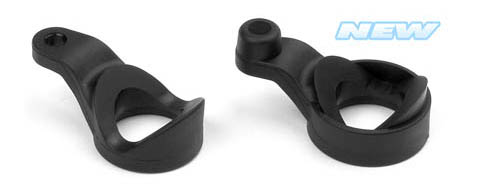
• Chassis flex The overall stiffness and flex of the car is another very important factor that affects the overall performance and handling of the car. Overall car chassis flex (usually dependant on chassis design and thickness) and suspension flex have a direct interaction with each other, meaning that the stiffer the chassis is the softer the suspension has to be, and vice versa. It is always a very difficult and demanding task for any designer to find the best compromise, but then again track conditions may require different flex characteristics. Therefore it is impossible to make a chassis and suspension with “universal flex” that will work in all conditions. This is the reason why some cars work very well on a particular track and under certain conditions, but at other tracks they do not work at all. Our R&D team has gained a lot of invaluable experience and knowledge over the years, and of course we wanted to solve this ever-present problem that everybody faced. Since we have experienced excellent results from our revolutionary Multi-Flex Technology™ (XRAY patent) in our electric touring cars, I decided to incorporate similar principles and technologies in the NT1. The radio plate on a nitro touring car plays a secondary role in the car’s overall flex (the main characteristics are set with chassis stiffness) we had to focus primarily on chassis flex. After working around this concept and testing dozens of different ideas, we came up with a very simple solution. For the standard kit, to make the car easy to drive and handle we decided to include a 3mm chassis with optimum cut outs in the chassis to allow sufficient flex; with proper suspension flex the car will run perfectly in all standard conditions. For specific racing conditions or race styles, the chassis can be additionally reinforced using an optional 1-piece engine mount which is very solid and will reinforce and stiffen the middle of the car. The 1-piece engine mount additionally features extra graphite brackets that can be mounted either to the front or rear to give extra reinforcement to either the front or the rear… or both. The graphite reinforcement brackets are only a few millimeters above the chassis level so that chassis roll happens as low as possible, while sufficient reinforcement of the chassis is ensured. Since setting the flex is a very advanced set-up feature for drivers looking for the outer spectrum of high performance, I felt it most prudent to offer this extra set-up feature only as an option, while keeping the standard car configuration so that it works very well for most conditions. Bringing new innovations that will again move the whole market further forward and soon we will see more new developments and innovations, which is great for the industry and for the customer. 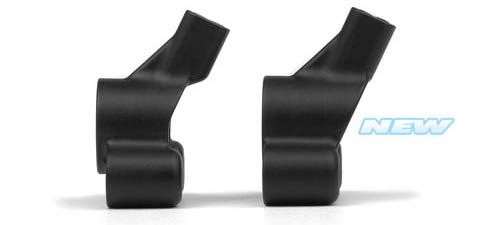
• Clean design The other area — despite not having a direct impact on performance but still very important for total satisfaction with the car — is the clean design and layout which allows very easy access to all parts for maintenance or set-up. Because my time is always very limited at races, and because I know how drivers think, I made sure that all parts were designed in such a way that you can easily access them, install/reinstall anything very quickly and comfortably. It is simply a joy to work on this car! After sorting out the key areas that are critical for the performance of the car, I could focus on all the other details. As typically with all other XRAY cars and my own style of designing the parts, I made all the parts with a very clean and clear design following the “pure racing design concept”. I have focused the design to make sure that no parts will be found that should not be there, and that access to all parts will be very easy. I myself definitely hate having to wrench on half of the car to access some part(s) for maintenance or set-up… therefore I made everything easy for set-up and maintenance. Most of the details we focused on during development are not radical or innovative at first glance; the beauty of the car comes through in all the small details that may not be immediately apparent at first sight, but are immediately noticed after the first experience of working with the car. (For example, to ensure no more hassles with gear mesh adjustment we used a fixed engine mount system which will ensure 100% consistent gear mesh adjustment no matter how many times you remove/reinstall the engine) For regular drivers like myself I have designed a new radio box that can be sealed so no water will get inside. However, during prototype testing I realized that from time to time the crystal needs to be changed, so to avoid the hassle of removing the sealing on the box I instead added a small opening just above the rear for crystal exchange. This opening was then sealed with an easily removable rubber cover. 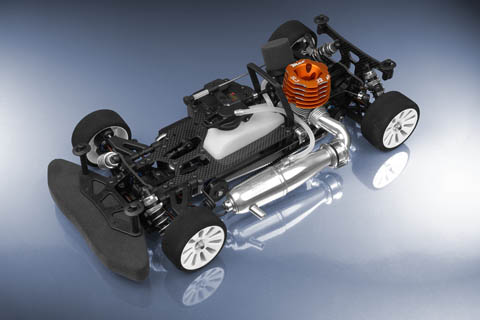
After the entire car was designed and developed, and after the initial prototypes were tested, the production of all parts started for the final production car testing. In total, 21 for composite parts were manufactured and considering that to produce just one mould takes on average 700–1000 working hours, we spent almost 20000 working hours on the moulds alone to be able to produce all the composite parts. As the final composite parts were molded, the prototype parts were replaced and we could finally start the final car testing. Utilizing our own new racing tracks at the new XRAY Millennium Factory we could test non-stop both outdoors and indoors even though there was snow outside. For final testing we had the XRAY team drivers from around the world come for long-term testing and to provide feedback that we had to immediately work into the final production batch. I was very happy that the car worked extremely well right away, but as expected we immediately experienced several issues that we had to solve in short order. All the details about final product testing and issue solutions will be in the next column… so watch out for Part 2. Enjoy the ride and ‘til next time… 
Dipl. Eng. Juraj Hudy Chief Designer XRAY PS: I have just received some excellent news: Barry Baker won the US Winternationals warm-up race with the NT1 — the car’s first race! This makes me very happy and proud, and allowed me a brief moment to relax a bit knowing that we are bringing out a car that is able to compete at the highest level. [ 本帖最后由 爱小车 于 2007-3-3 12:37 PM 编辑 ] |
广告投放|联系我们|手机|投稿|Archiver|About us|Advertise|遥控迷模型网|RCFans ( 粤ICP备10210518号-1 )
版权所有 RCFans.com © 2003-2016